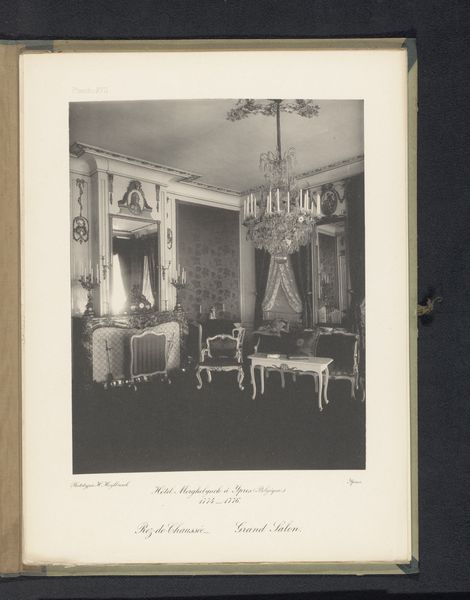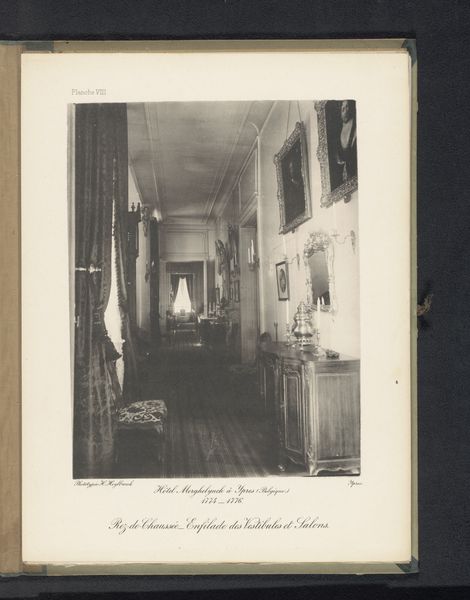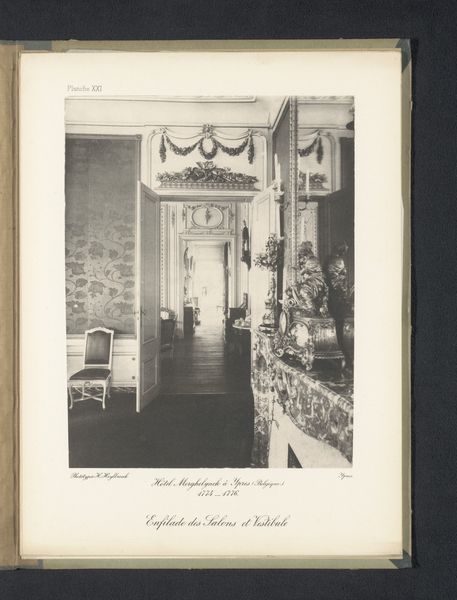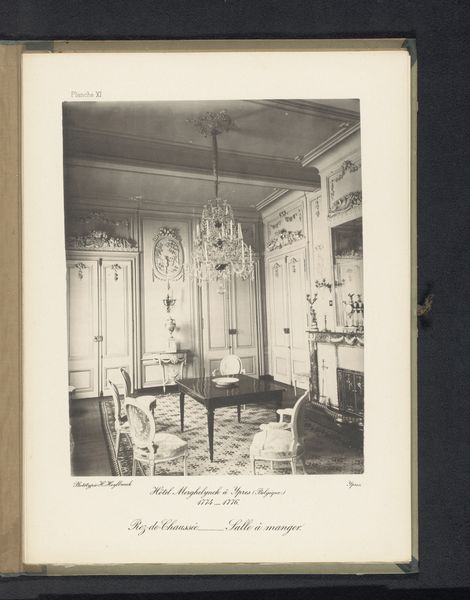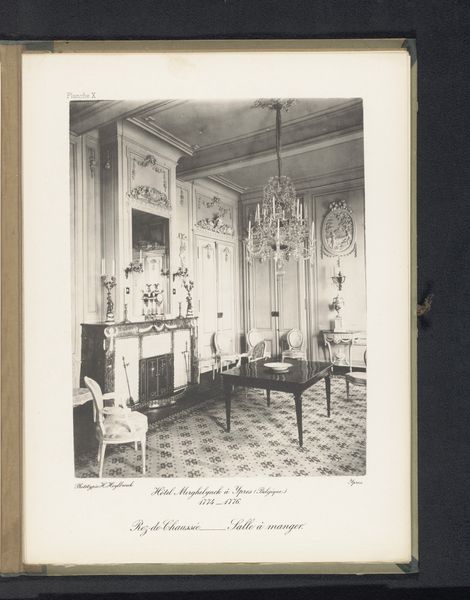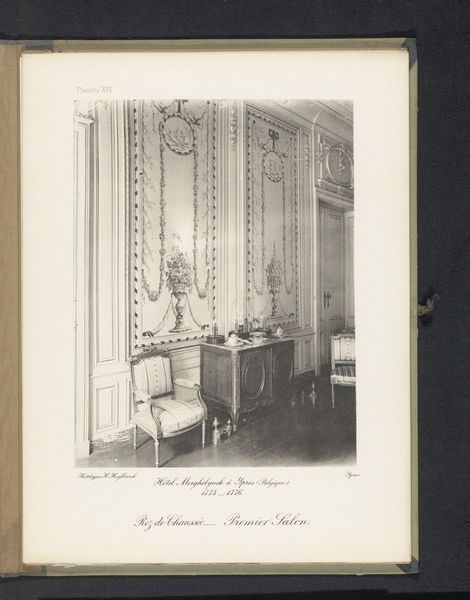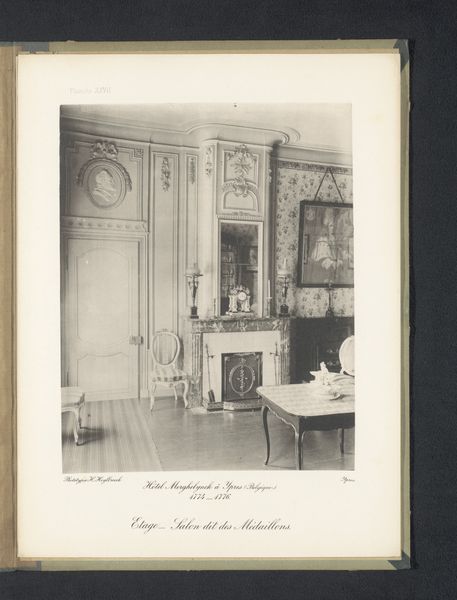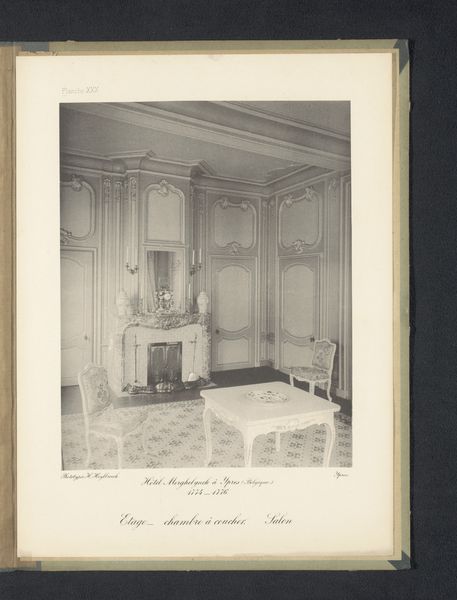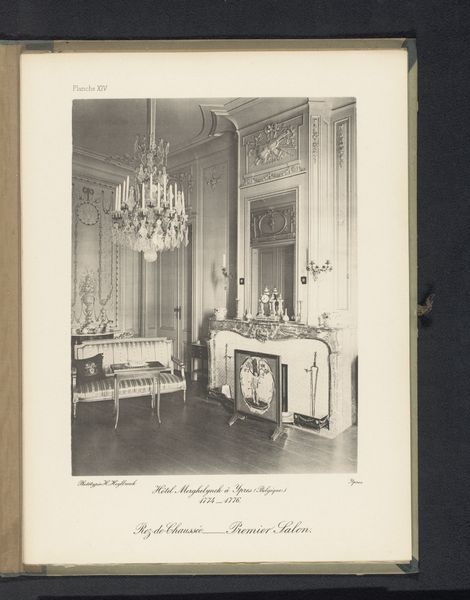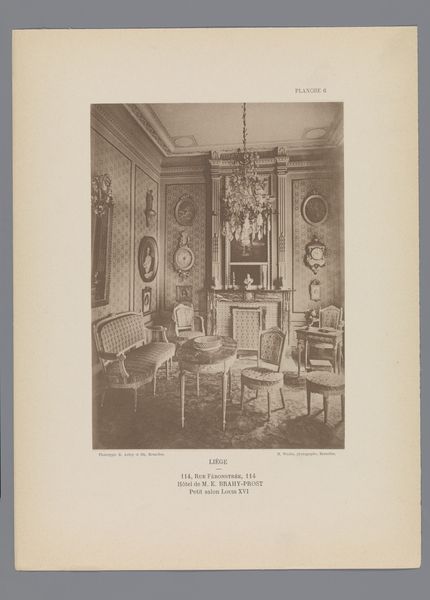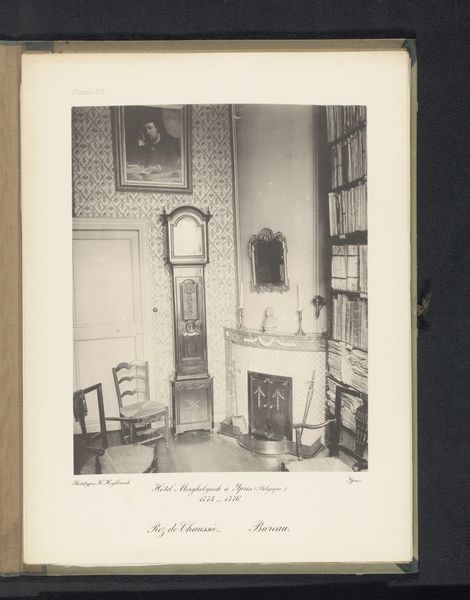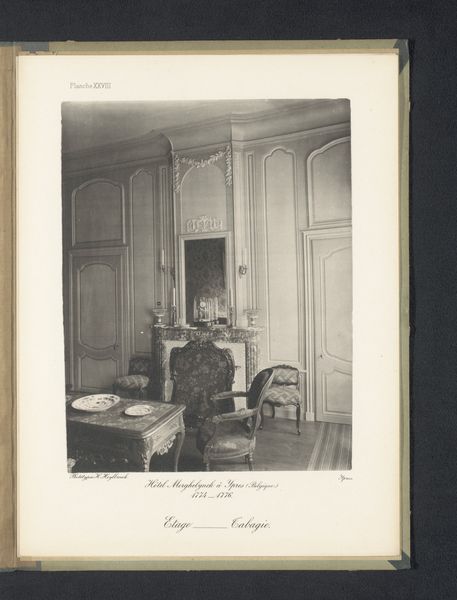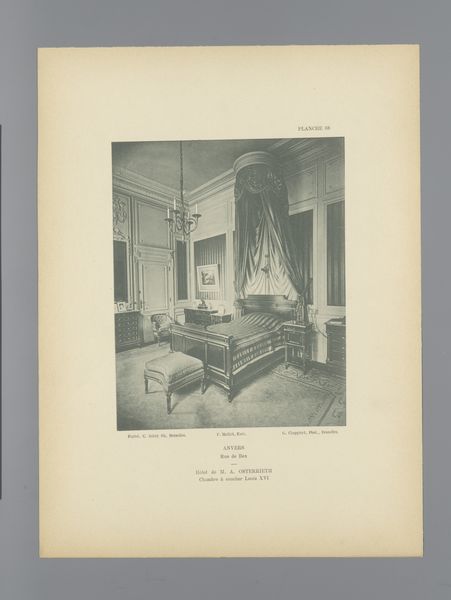
plein-air, photography
#
plein-air
#
landscape
#
photography
Dimensions: height 273 mm, width 210 mm
Copyright: Rijks Museum: Open Domain
Editor: Here we have a photograph titled "Gang op de begane grond van Hotel Merghelynck in Ieper, België," or "Hall on the Ground Floor of Hotel Merghelynck in Ypres, Belgium," attributed to Hector Heylbroeck and taken before 1894. It feels very staged to me. What do you make of it? Curator: I see an almost uncanny documentation of bourgeois space, meticulously arranged to convey status. Think about who had the power to commission and consume photographs like this at the time. This wasn’t casual documentation; it was a carefully constructed narrative of wealth and control. What social structures are reinforced by depicting space in this way? Editor: I hadn't considered that. It's so easy to get lost in the symmetry and the vanishing point and not think about who this photograph was *for*. Are you saying that it was meant to show off the hotel? Curator: More than that. It normalizes a certain lifestyle, making it appear as the natural order. Notice the empty chairs, seemingly waiting for their wealthy occupants. How does the artist utilize the gaze, the viewer's perspective, to imply participation in or exclusion from this privileged world? Editor: So it's not just about showing the space but about showing *who* belongs in the space. By its very nature it reinforces inequality? Curator: Precisely. The very act of documenting such a space, making it visible and circulating it, contributes to the social hierarchy. How do you think we can counteract this through our interpretation of art like this today? Editor: I guess by pointing out the power dynamics at play, like we're doing now. Thanks, this has given me a lot to consider. Curator: And you, me as well. Let’s remember that every image carries with it the imprint of power and privilege and a responsibility to critique and contextualize.
Comments
No comments
Be the first to comment and join the conversation on the ultimate creative platform.
